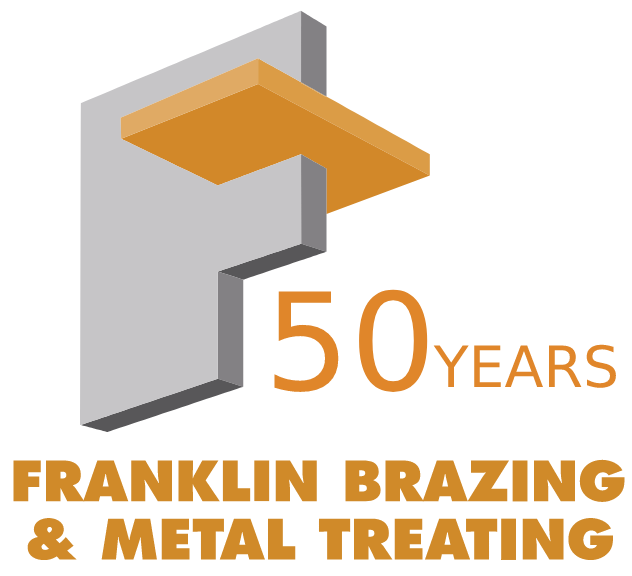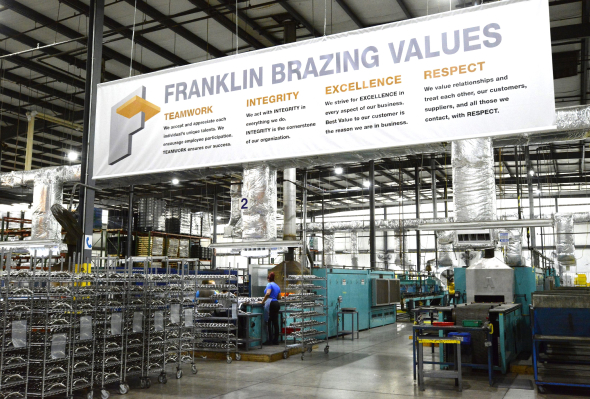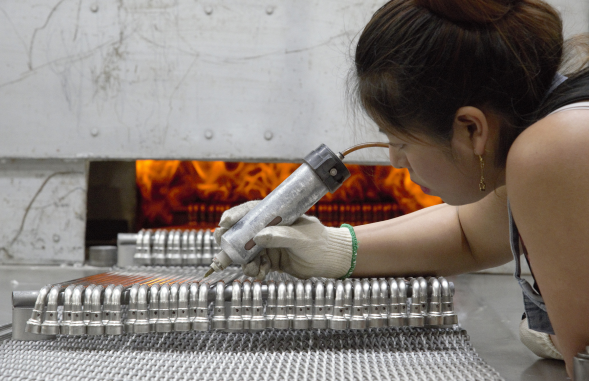Understanding Brazing & Brazing Quotes
Brazing is a joining process that involves melting a braze filler metal, such as copper, to bond two or more metal parts together. A good braze joint will have a gap of 0.00”-0.002” and have three times the thickness of the thinnest metal of coverage to achieve a strong bond. The brazing process is extensively used throughout the automotive, trucking, aerospace, and consumer products industry as a means to efficiently and effectively join together tubes, brackets, fittings, and stampings.
When requesting a furnace brazing quote, it’s crucial to provide accurate and detailed information to ensure a successful and cost-effective outcome. Here are the key points to include in your request:
1. Material Composition
Define the materials to be brazed. This could range from common metals such as steel, aluminum, or copper to nickel-based alloys.
- Material selection significantly impacts brazing process requirements, scope, heating conditions, and filler material compatibility.
Note any coatings or surface treatments to parent material.
2. Filler Material
Indicate the type of braze filler metal required for brazing. Filler materials can vary widely, including silver-based, copper-based, or nickel-based alloys.
- The choice of filler material depends on factors such as the base materials being joined, operating conditions, and desired joint properties.
Provide any relevant specifications for the filler material.
3. Part Weight
Provide the weight of the part to be brazed.
- Part weight influences heating and cooling rates in the continuous belt-controlled atmosphere furnace.
- It also affects handling, shipping considerations, and overall cost.
4. Technical Specifications
Identify any specific requirements, tolerances, certifications (IATF 16949, AS9100, AWS C3.6, etc.), or features critical to quality (CTQ’s) that must be maintained during brazing.
- This may encompass dimensional tolerances, surface finish specifications, mechanical properties, or regulatory standards.
- Clear specification ensures compliance with desired quality standards and functional requirements.
- Specify the end use of the parts. Some end uses require different treatments or filler metals than others. For instance, a copper filler metal may not be selected in a marine application due to its corrosion when exposed to salt. In this instance a nickel filler metal could be selected over copper.
- Knowing the end application will help our engineers map out the process that will best suit your parts.
5. CAD Drawing or File
Furnish a detailed drawing or Computer-Aided Design (CAD) file of the part.
- CAD drawings facilitate precise visualization of part geometry and aid in planning the brazing process effectively.
- Additionally, CAD files enable digital simulations and optimizations for enhanced efficiency.
6. Estimated Annual Usage (EAU)
Provide an estimate of the annual quantity of parts required.
- Accurate EAU prediction enables efficient resource allocation and cost-effective production strategies.
Why These Details Matter for Your Brazing Quote
By including these essential details in your brazing quote request, you’ll help the Franklin Brazing Quote Team to provide an accurate estimate and ensure a successful brazing process. Remember that clear communication and collaboration are key to achieving the desired results.
Learn more about our brazing capabilities to see the full range of services we offer and how we approach quality, efficiency, and part complexity.
Request a Brazing Quote from Franklin Brazing
To find out how Franklin Brazing can help you, call us today at 513-459-7782, or request a quote here on our website.



